Despite the variety of modern materials, wallpaper in the kitchen remains popular. It is a versatile, diverse, and beautiful finishing option – you just need to choose the right type. But what if plain wallpaper seems too boring and monotonous? Do you want to add some accents? Then don’t be afraid to combine different options, and we’ll tell you how to do it and what to pay attention to!
Types of Wallpaper for the Kitchen
Not all wallpaper is suitable for kitchen walls, as you need to consider factors such as humidity, temperature, grease, and odors. For example, inexpensive paper collections and expensive luxurious textiles won’t last in such conditions for even 5 years. But there are alternatives!
Non-woven Wallpaper
Non-woven wallpaper is a more modern, practical, and easy-to-care-for alternative to paper. They are just as diverse, and in terms of texture, even more original. The fabric itself is denser and more durable due to its non-woven fibrous structure. Thanks to this structure, it remains eco-friendly and allows air to pass through.
Non-woven wallpaper can be washed and repainted 10-15 times – the exact number for each collection is specified by the manufacturer. Therefore, to freshen up the look of your kitchen, you won’t even have to plan a major renovation. When laying non-woven wallpaper, it’s enough to apply glue only to the wall – the fabric itself does not need to be impregnated. And that means it’s much easier to apply it neatly and evenly, without worrying about shrinkage during drying.

Vinyl Wallpaper
Vinyl is denser, more durable, and better at hiding minor surface imperfections than paper. It’s not a standalone material, but a special foamed coating applied to a paper or non-woven base. This coating offers strength, wear resistance, and resistance to washing and repainting.
Working with vinyl is easy – it doesn’t bubble during application, making it simpler to handle independently. You can wash vinyl wallpaper with a soft sponge and soapy water without concern for its preservation or color. The protective coating enables interesting textured designs to be printed onto the wallpaper using silk screen or cold embossing methods.

Paintable wallpaper is a separate collection of vinyl and non-woven coverings with increased density and durability. They usually come without patterns or designs but have relief textures, essentially serving as an alternative to decorative plaster. Compared to paper, such wallpaper has increased sound and thermal insulation, although it certainly cannot replace mineral wool insulation.
In the kitchen, paintable wallpaper is not afraid of any stains from grease, juice, or wine. Even if you can’t remove it completely, the effects of a small accident can always be corrected with a can of paint and a brush.

Glass Fiber Wallpaper
Glass fiber wallpaper is an unusual, modern material with increased density and durability that came to us from Europe. It’s a durable looped fabric woven from thin glass fibers. Essentially, it’s closer to ordinary textile fabrics, as it allows air to pass through and provides a comfortable microclimate.
You can wash glass fiber wallpaper even with a stiff sponge or brush, making it easy to remove even the toughest stains. The seams during installation are so inconspicuous that you can easily replace a whole section without a trace. When combined with vinyl or non-woven wallpaper, glass fiber wallpaper provides an even more unusual play of textures.

Liquid Wallpaper
It’s hard to call liquid wallpaper wallpaper in the classical sense – it’s a kind of alternative to decorative plaster. However, instead of sand and other fillers, it’s made of lightweight and eco-friendly cellulose. If you prefer a distinctive paper texture, then for a hot and humid kitchen, pay attention to liquid wallpaper.
Due to its specific nature, the material is easy to combine with others. Additives, pigments, mother-of-pearl, glitter, and any other decorative elements can be added to it. You can experiment with textures and make an accent wall in the working or dining area against the background of more neutral vinyl or non-woven wallpaper.

Photo Wallpaper
Wallpaper with photo printing differs in that absolutely any image can be applied to it, including personal photos. The type of base can be different, so they can also be used in the kitchen. However, more often than not, they serve as an accent element rather than a full-fledged covering for all walls.

How to Combine Wallpaper in the Kitchen?
When choosing wallpaper for combination, pay attention to color, texture, pattern, density, and coating thickness. Use adjacent shades for monochrome interiors and the principle of contrast for accents. Combine monochrome collections with patterned ones in the same color scheme or similar patterns in different colors.
Companion Wallpaper
If you want to combine several types of wallpaper in your interior but are unsure about combinations and harmony, choose companion collections. They can be found in the assortment of most manufacturers and are already balanced in technical, operational, and aesthetic characteristics. Companion wallpapers won’t look too flashy or tacky, but they won’t be too dull either.





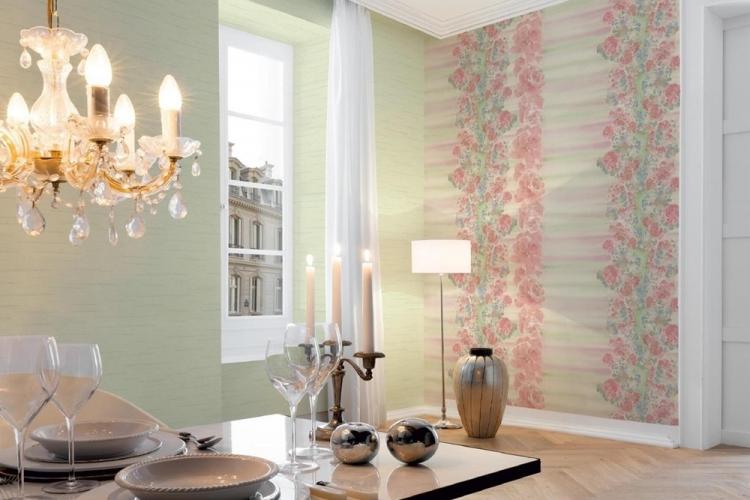



How to combine wallpaper patterns?
It can be challenging to combine multiple collections of wallpaper with expressive patterns. Despite the eclectic trend, you still want to create a comfortable and cozy kitchen. Balance can be achieved by skillfully balancing one thing with another.
If you have a pattern that is too large, maintain the proportions and overall color scheme. If the pattern is small and uniform, you can experiment with colors and placement. Make sure to control the brightness and saturation of the shades to keep them harmonious and visually enlarge the space.
Monochrome wallpapers go well with almost any pattern. Romantic floral and botanical motifs pair well with stripes or polka dots. Checks look interesting with geometric ornaments, but watch the lines and accents – geometry has the most significant impact on the perception of space.







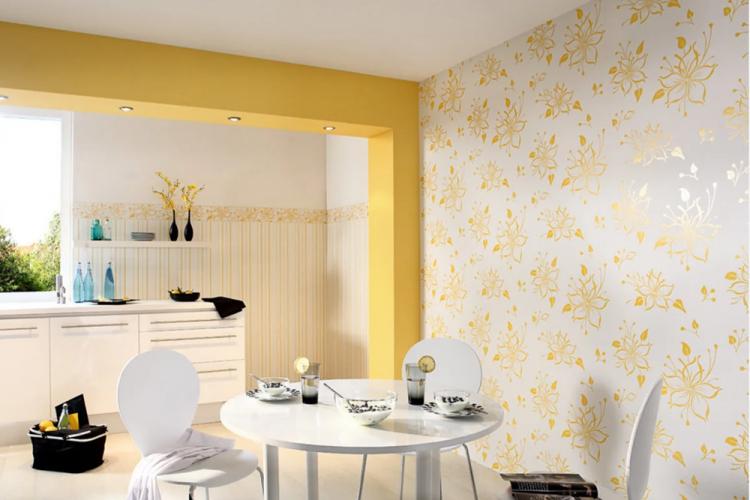
Monochrome and accent combinations of wallpapers
Several collections with a difference of 3-4 shades create an intricate light and shadow effect. Use this for zoning, correcting geometry, or visually expanding the space. It is an excellent choice for modern and minimalist interiors, for pastel Provence.
The opposite approach is a bright accent wall that immediately attracts attention. In this case, it is better not to overuse patterns and textures but to stick with one. Neutral and pale combinations fit into minimalism and Scandinavian style, while bright and juicy ones complement loft, high-tech, and modern styles.




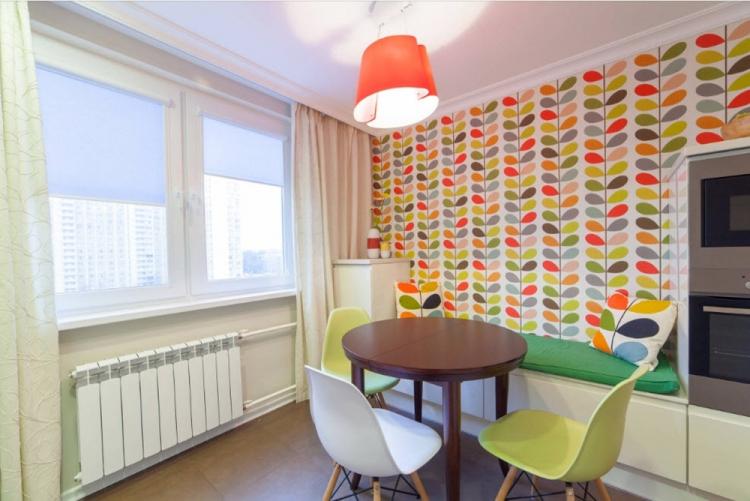
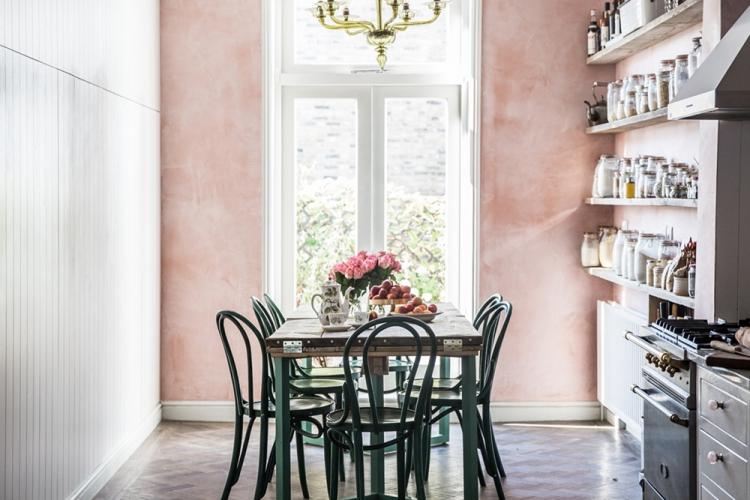
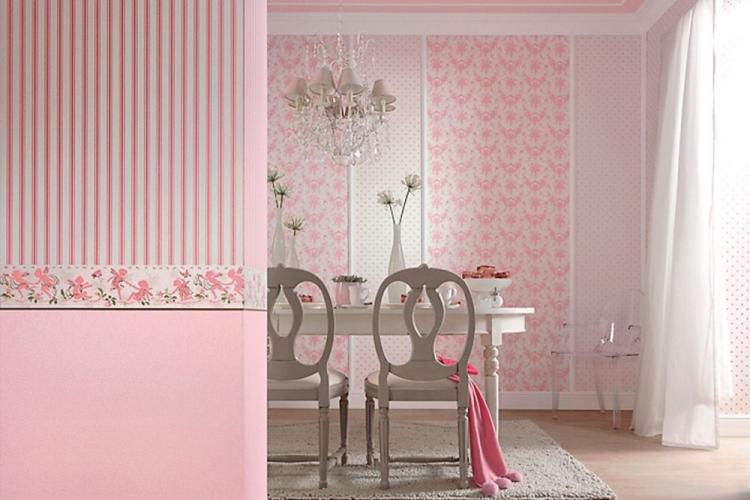

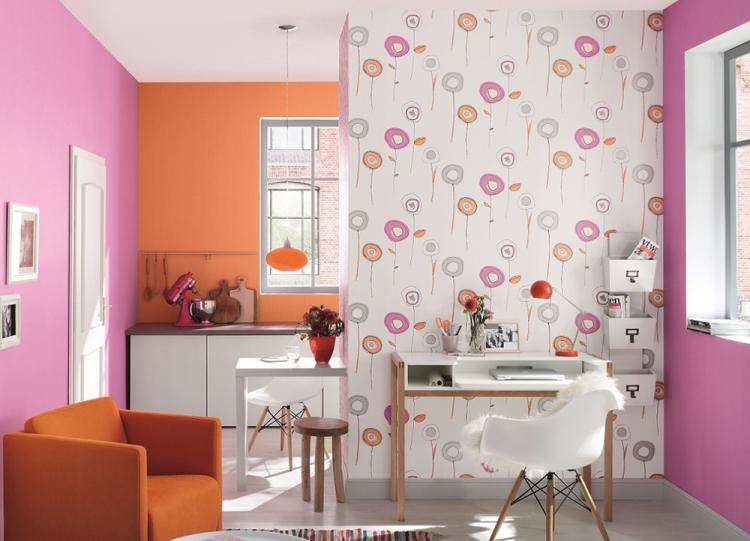
Combining with photo wallpapers
Bright paintings and photographs can be appropriate in the kitchen like nowhere else. Even the brightest colors do not look too bold or aggressive here, so do not deny yourself colorful accents. Choose wallpapers with a 3D effect or perspective to visually enlarge the room, or textured coverings to simulate any other materials.



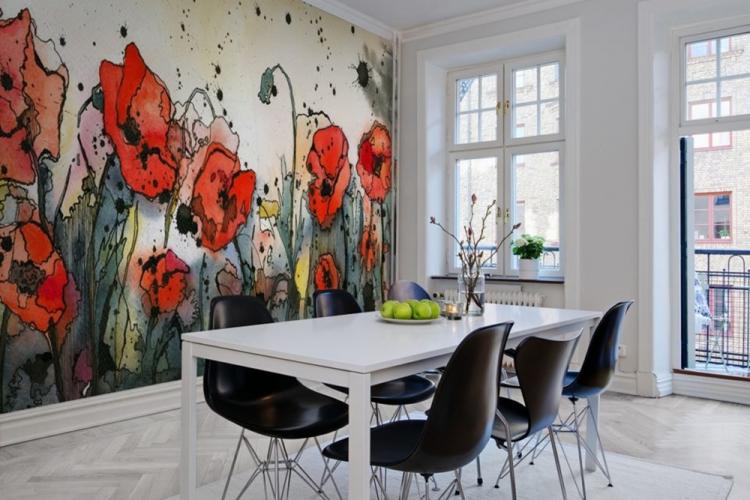



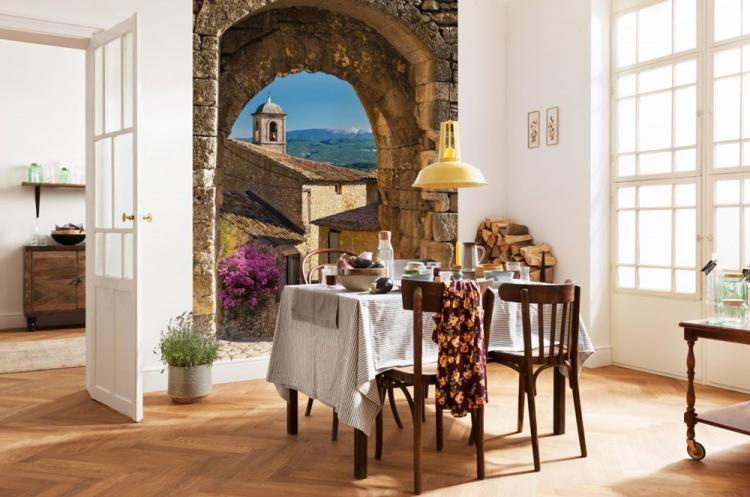

Vertical and horizontal combining
Vertical combining is a simpler and more obvious technique: you simply paste different stripes in different sequences. For this, it is better to choose rolls from the same manufacturer and from adjacent collections so that they match in width and thickness. Otherwise, the coverage will be too uneven and untidy.
Horizontal combining is less common and more challenging to do yourself. One approach is to apply wallpaper with a small pattern to the lower part of the wall and a monochrome or floral pattern to the upper part. Cover the seam with an elegant decorative ribbon to create a refined solution for rural and classic styles.



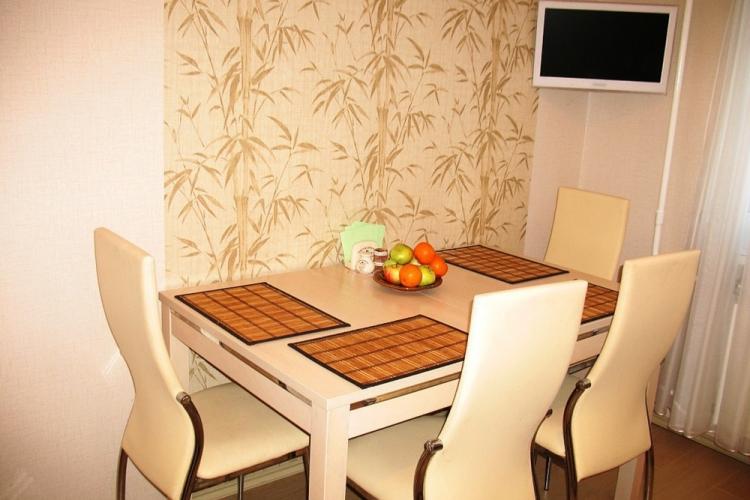




How to combine textures in the kitchen?
When choosing textured wallpapers for the kitchen, do not forget that they will inevitably have to be washed and cleaned of stains. Therefore, the most complex and expressive reliefs are better placed away from the work area.
A single-color smooth covering with expressive accent inserts looks interesting. Experiment with combining matte, satin, glossy, or shiny fabrics. Combine ordinary wallpapers with plaster, brick, stone, wood, or cork.








Decorating Niches and Wall Panels
When combining different wallpaper collections, it’s not necessary to cover all walls with them. You can choose an accent collection for decorative compositions. For example, wall panels in heavy frames look just as good as posters or paintings and also emphasize the necessary areas, such as a sofa or dining table.
If you like expensive textile wallpapers with a pronounced texture, gold threads, and decorations, use them as decorative inserts in a classic kitchen. The main thing is to place the composition away from the working surface, stove, and sink.
Any niches and drywall structures can be transformed with imagination in their finish. In combination with textiles and other kitchen decor, you will give the interior individuality and expressiveness.









Combining Wallpaper in a Small Kitchen
A skillful combination of colors, textures, and patterns will help you visually transform a small kitchen. Start with a light or pastel monochromatic coating and combine it with patterned or geometric inserts. For example, vertical stripes can visually raise the ceiling, and wide inserts can expand the walls.
Another option is a monochromatic coating with different textures. For example, several collections of embossed vinyl or inserts of liquid and glass wallpaper. To save money, choose one collection for painting and use different colors for zoning.









Combining Wallpaper in a Kitchen-Living Room
There are more possibilities for combining wallpapers in studios and kitchen-living rooms. You can use coatings that are not suitable for the kitchen, such as paper, textiles, bamboo, and any decorative materials in remote areas. Use them to decorate the wall behind the seating area, the niche under the TV, or the workspace.

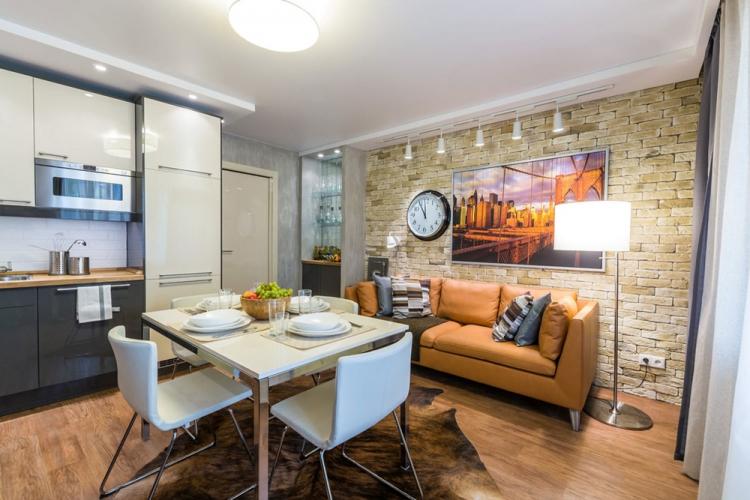

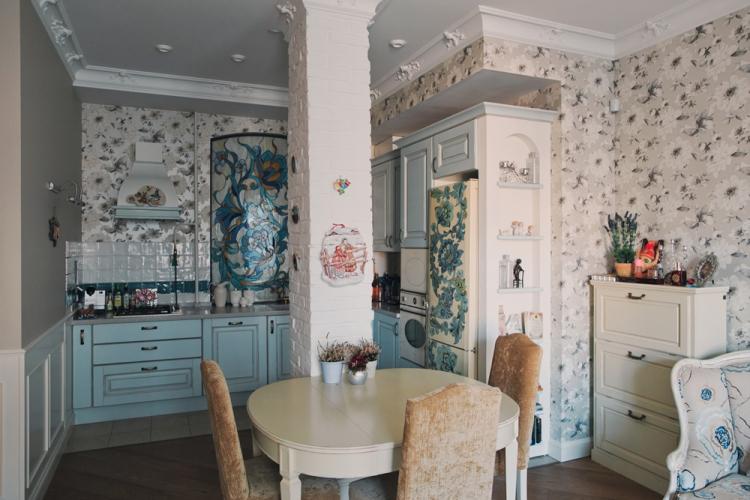








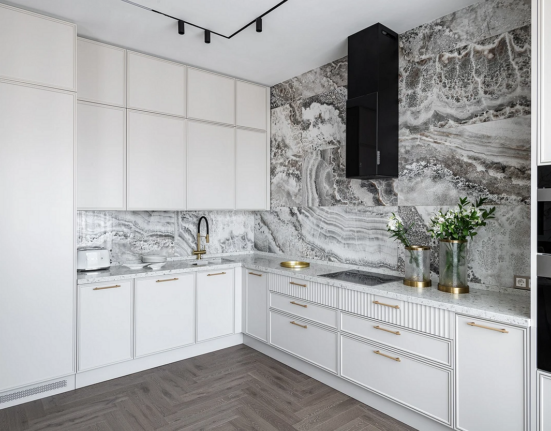

Leave feedback about this